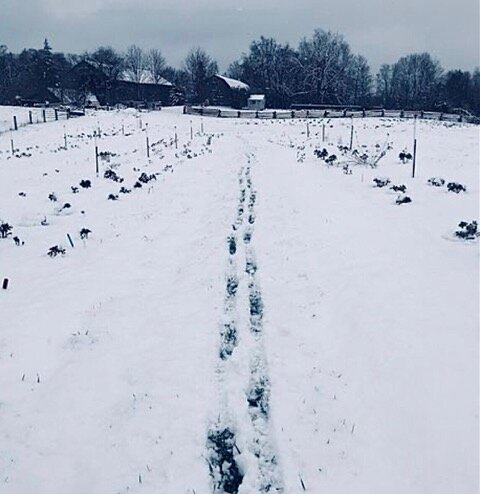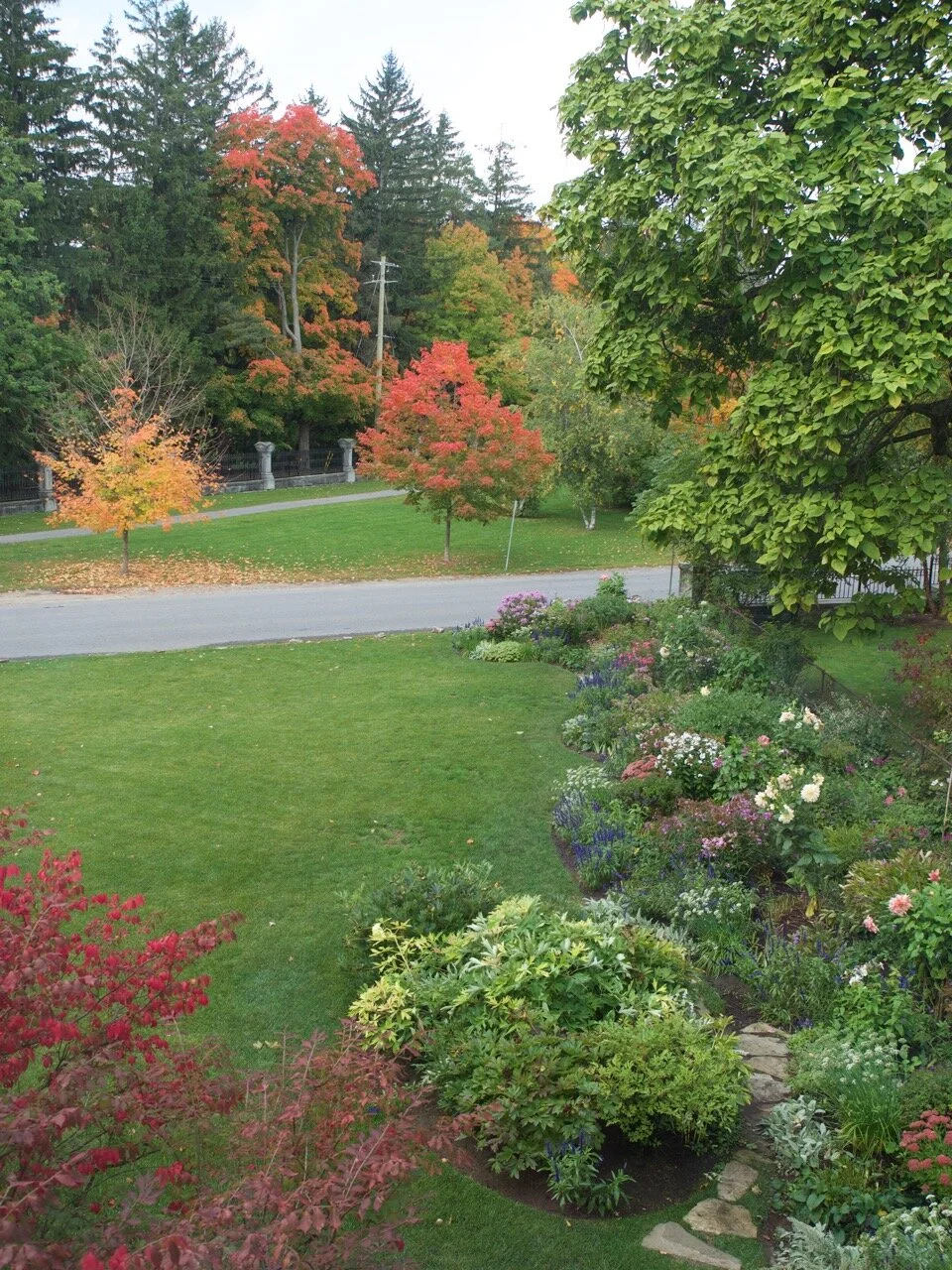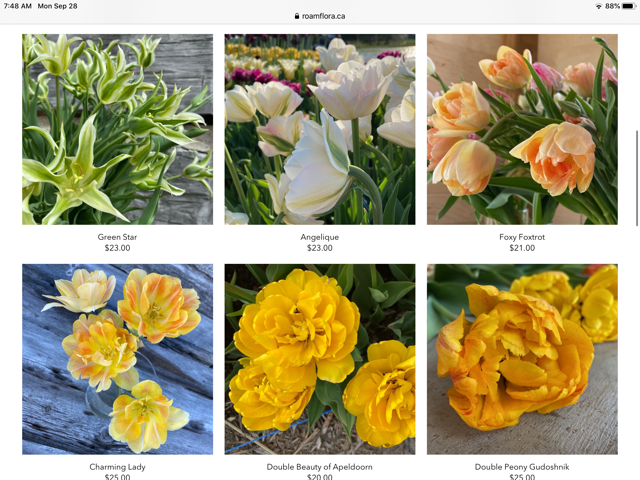Photo credit The Caledon Hills Peony Farm
So, a few people have asked me in the last week or so since seeing the upcoming forecast of snow, if they should cover everything in their gardens! Well, that is nigh impossible unless you have a few old parachutes to spread over your entire plot…. Or if you turn on and modify your irrigation system to spray from above as they do in the orange groves of Florida and the vineyards of California!
If you are going to protect anything, let it be the most tender plants - those we grow indoors in the winter, such as herbs, succulent plants, orchids and other tropicals. Any drop in outside temperature for them can be deadly - the liquid in their cells will freeze, harden into an ice-like mass, and split the sides of their cells, just as water in a pipe would. They don’t have any anti-freeze. Some plants, however, will take some freezing temperatures, because they do have more sugars in them - you have seen pansies, daffodils and early tulips, along with snowdrops and winter aconites covered in snow and then see them bounce back in no time. And then there are the ones whose leaves, at least, are iron-clad, and will make it through anything! Always remember, however, that it is the flower buds which often are killed or damaged, and not the leaves and stems. So certain shrubs and perennials will not die after a hard week of temperatures, but their flower buds might.
Now, the kind of temperature affects survival rates as well. Still not a good idea to leave anything really tender at temperatures in the single digits, but for slightly less tender things - iris, peonies, etc - if one night it goes to -1 and there is a wind, there is not much worry of them freezing. If the nighttime temperatures drop to -2 two nights in a row, the daytime temperature stays at zero, and there is no wind, then that could spell trouble for many things, such as peonies, flowering apples and other spring-blooming plants like Magnolias, Flowering Almonds, Forsythia.
So, if the snow really does come this week, take in those pots you have put out from the heat of the house; use light towels or pieces of light fabric to cover any annuals you have planted in containers already - make a teepee using stakes covered and tied on with string. And for tree peonies, which are in full bud by now, there is always the old orphaned sock method - I wrote about it in this blog last year - May 9th, 2020. And the many, many other plants in your garden - all the trees and shrubs with their newly opened flowers and leaves, for example - well, you will just have to hope they will survive without too much damage. And then there is always next year!
If you have any other tricks for protecting plants during a frost, let me know. Always good to share that information!
Until then, take a look at this photo below. It was taken on April 21st, 2020. History might repeat itself!


































































